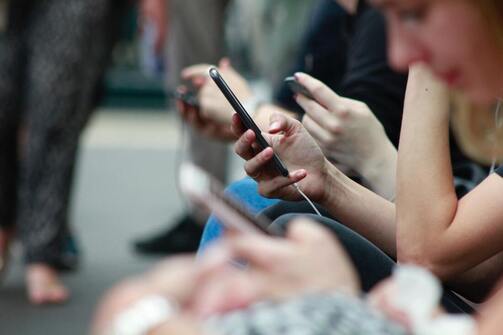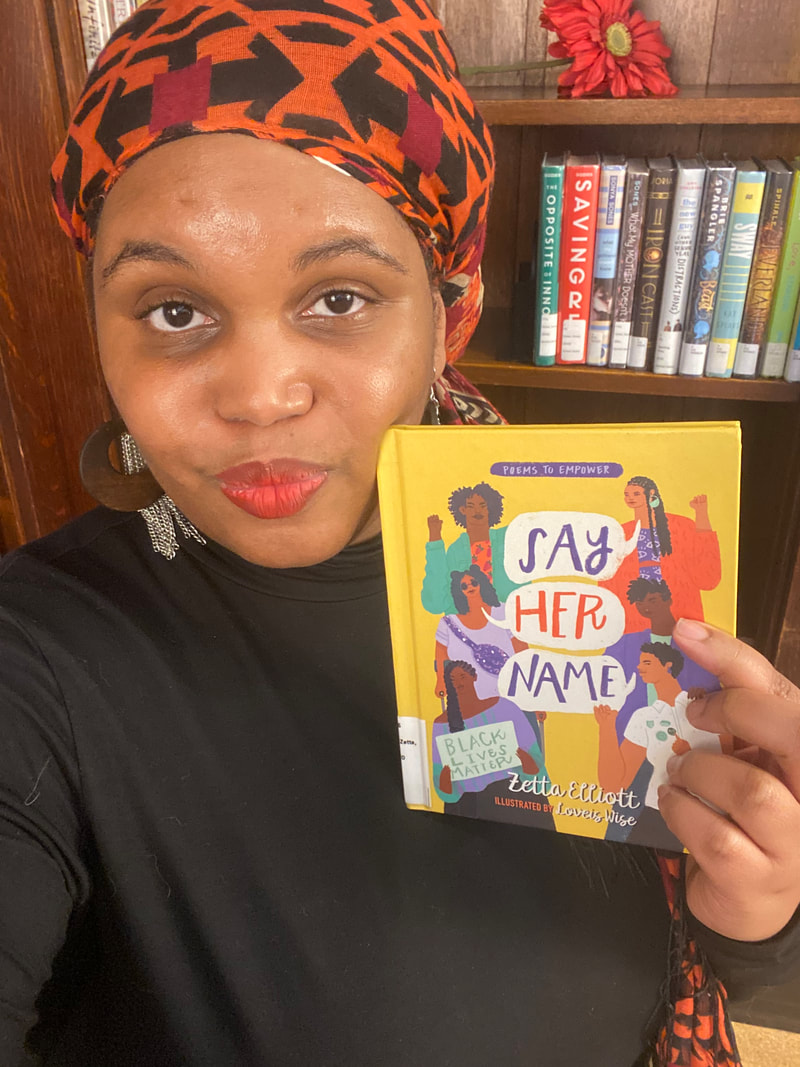 Photo by Stephen Broome on Unsplash Photo by Stephen Broome on Unsplash Winter in South Carolina has been a pleasant surprise. Often when moving for work you don't get to vet a place for its year-round charm. You get acquainted with the city typically in one particular season. However, Clemson is proving to have a all season appeal. A couple of things that are unmistakable about Clemson, SC is that there is Clemson pride everywhere. Folks ooze orange and purple. As a UTK alumni I can appreciate the pride of your school. Clemson is definitely the star of the upstate. I sense the campus winding down as I continue my rotation through the Collections & Discovery Department. My work in Adobe is kicking up and I finally feel good about my application for the Emerging Technologies Librarian & Director of the Adobe Studio and Makerspace. We'll see what happens with that. Let's go ahead and get into it. A highlight of this month was attending the Inclusive and Ethical AI for Academic Libraries. The conversations surrounding AI in academic library spaces for researchers are really growing my own research and interest in how AI is affecting the library world. Collection & Discovery Rotation This month I've been able to learn more about Digitization Services and the Metadata Team. Digitization was fascinating I really enjoyed learning about the organization and workflow of that particular department. I thought the enthusiasm of the Metadata Team was really something to see. The sheer enjoyment that the department has for what they do is infectious. Adobe Update This month in Adobe has been a lot of fun. There are a lot of students using the space to create gifts for friends and family. I sat with a few students as they used the embroidery machine and also learned how one intern uses the laser machine over in Watt to make personalized gifts for his entire family. On the other side of this I've been able to bring more professors into the space to give them tours of the audio and video room and letting them know how their students can also use the space for assignments. Since they were newer faculty that I met at the Faculty Orientation I was also to connect them to their liaison librarian. The last thing I was able to do was give a tour to the Clemson African American Museum team as they prepare to work on a oral histories project. Other Projects Not only am I going through my rotations through the four divisions and working in Adobe, I have also been working on other projects and research outside of Adobe. One of those projects has been a Affrilachia project with three colleagues as well as beginning to work on a Reparative Archives project. Not to mention the deadline is steadily approaching for my article submissions for my Theatre Journal article. On Another Note
As we get ready for our holiday break, I can say Clemson Libraries knows how to throw a shindig. We feasted, laughed, and watched Home Alone. After three long years I finally get to go home to TN. Happy Holidays!
0 Comments
 Photo by Donnie Ray Crisp on Unsplash Photo by Donnie Ray Crisp on Unsplash This month I have developed a workflow that has me feeling productive and hopeful. This month's highlights are shadowing at Tri-County Community College (TCTC), beginning my rotation with Collections & Discovery, and GIS Day. This month has really made me see the possibilities ahead of me. I kicked off this month by attending the Commission on the Black Experience (CBE) meeting and it's great to hear what is happening on campus that I might not know about. I also was able to attend the last eResources Librarian presentation/interview and it was pretty interesting hearing what that librarian in particular does. I also attended the Science/ CAFLS Librarian presentation and interview but had already worked a bit with that candidate so I was familiar with her work. These interviews have given me so much insight into the different roles and how people approach their work. Collections & Discovery Rotation This rotation started with the Collections & Acquisitions. I got to spend the day sitting with folks in this department. It started with Acquisition Workflows and them learned more about Alma & Analytics. I will say that I am just learning Alma. The public library systems I've been in have all used BiblioCommons as their catalog and Symphony as their integrated library system. Clemson University is a state school which means that all public institutions have the same integrated library system. At the end of the day I met with the E-Resources team to learn about what they do. Overall, it was a great start to this rotation. GIS DAY 2023 GIS is Geographic Information System. I didn't know much about GIS before coming to Clemson but this day is specifically designed to celebrate the work done by faculty, researchers, and GIS professionals. It was a fun and engaging time that made me excited for how GIS can be used not only for research but as a part of libraries, special collections, and archives. I found myself in conversations on how some spaces have used AR to create virtual spaces for special exhibits. Now it is a goal of mine to earn my GIS certificate so I can use it for some of my library work. Adobe Update
I've been working on getting familiar with the Adobe space this month and getting to know the interns. It has been fun talking about AI and some of the tools with the interns and finding out what they like about the space as well as what they think can be improved upon.  Photo by Fallon Michael on Unsplash Here's a peek inside the library world. As I mentioned in my last reflection I have begun my rotations. This month is my rotation through the Teaching, Learning, and Research departments. This department is one that I am most familiar with and have really been looking forward to. Other than my rotation I have also been attending webinars and working on the service portion of my residency. I also rounded my month off by visiting our bridge partners at Tri-County Community College. Overall, it's been a great month.
Each week of this month I would focus on a different division of the Teaching, Learning, and Research department. I began with User Services which is honestly one of my favorite divisions from my public library experience. Thinking about user needs and doing customer service is one of the reasons I've really enjoyed librarianship. Then I visited the University Press which was another great department to chat with since my last position was managing an imprint. I thoroughly enjoyed the conversations I was able to have about open access and journals, but also about how the University Press works with authors and deals with submissions. It was fascinating and I can't wait to work with them a bit more on projects. Then I made my way to Teaching & Learning where I was able to have a jam-packed day of learning more about the special subject librarians. I loved being able to sit with so many different librarians with similar and not-so-similar pathways as mine. Though I started off thinking I wanted to focus on Young Adult Services I knew it was because as a Teen Librarian, I had one focus. Being a special subject librarian in an academic space may be a tad different from the research and service expectations but ultimately it is the same work that I know and love to do. The rotation ended with a discussion and look at open education which is another pathway I hadn't really looked at before but there are some surprising crossovers with my skillsets and interests that I found really interesting and engaging. Ultimately, this entire rotation has reaffirmed the aspects of librarianship that I like the most. One thing I appreciate about many of my workspaces is their support of professional development. Technically all of the libraries that I've worked at have really been affirming in letting employees develop professionally. If not the entire institution then my supervisors have been. That said this month I've gone to an Archive webinar and also attended some faculty interviews/presentations. It has been informative. Lastly, I am big on service, to be honest. I typically dive into service opportunities and sometimes tend to over-extend. However, since the pandemic, I've learned to only commit within my capacity. That said I've been able to be a preliminary judge of a 3 minute thesis competition which was a lot of fun. I felt like I learned a lot on topics I am not a expert in. I also have been selected to be a reviewer/moderator for the Conference of Academic Library Management 2024 which is exciting and something new for me. Also I've joined the Social Media & Communications team for the Resident Interest Group of ACRL which is really exciting. I love being on Social Media teams. As you can see, this has been a full month and I've enjoyed being here so far. The other things that I've not mentioned but should lightly be noted on is that libraries face turmoil in the most unexpected ways so that can be frustrating and disappointing. I can say that it bolsters my commitment to library work no matter how political the world gets. I also had to submit my reappointment paperwork for Year 2 of my residency. There was a nervous energy everyone had about this that didn't hit me until I submitted my paperwork. Academia is strange in this way where things are formalized but if I had to compare it to something I guess I compare it to annual reviews in public library spaces. I always am a big believer that my work is proof enough so I have nothing to be nervous about. In this space though I realized I am more nervous about not doing the paperwork right than I am about anything else. However, we'll see what happens. Until next time.  The best part about working in libraries is no two days look the same. When it comes to library work there's the agenda you create and then there's what happens daily throughout the day. My adaptability in these situations makes the day go smoothly. This month has been about me getting familiar with structuring my own days, exploring research, and sinking into working at a university. Let's look at some of the things I've been able to accomplish or encounter this month. Fortunately, my previous position had days that I had to structure myself and I know there is a learning curve for how to fine-tune my time. It takes about a year to establish a good routine so I know to offer myself grace and freedom to not get it perfect every day. Some days it's just enough that my checklist is completed. Creating bite-sized goals makes for better morale. I love time management tools like planners, Trello, and digital calendars to help me throughout the day. I am excited to see how my schedule develops once my rotations are over but with the way they are being scheduled, I think I'll be able to do some interesting things with my days. Speaking of rotations, I officially started rotating through the Organizational, Performance, and Inclusion Department. It's okay if you don't necessarily know what that means because I know I didn't. Basically, it's the department that ensures the structure of the library is in place. By this I mean Marketing, Digital Strategies, Learning Environments, Facilities, Strategic Planning, EDI, and a few other things. This is also my home department for the time being. Once my rotations are over I'll choose a new home department (possibly) and then I'll choose a project to focus on. Another thing I got to do was shadow the Science Librarian while she tabled a First Year Success event. I love outreach. Tabling events has always been another favorite about librarianship so it was nice to see a liaison librarian doing it right on campus. I also began to wonder if Clemson Libraries tabled events in the community or any surrounding areas but something tells me that's not something I'll see around here. However, maybe that's something that can be created. We'll see. This month has also been about getting familiar with the university, campus, and meeting structures. I've been able to attend our faculty meetings, and commission meetings for women & the black experience, and I've submitted to volunteer at a conference as a reviewer. These meetings always have an air of formality. I've been in a lot of these formal types of meetings from being an artist no less. Artists often sit on councils and if you're a social commentary poet like myself who is passionate about EDI initiatives you might just end up in meetings with politicians or community government meetings. Universities have a similar structure of formality. Also now that I'm in the residency I get to participate in the Diversity Resident Experience group where we meet monthly and talk about our experiences as well as do some professional development activities. I applied to work on one of the Residency Interest Group teams so we'll see if I got that. Attending online workshops or presentations has always been exciting to me and is another thing that I get to do in my library work. I have a few topics of interest. Some things I've been paying attention to are AI and archival work. These are two parts of librarianship that have some interesting growth happening as well as emerging technologies within library spaces. So this month I attended Community-Driven Archives & Libraries in the Age of AI which was pretty great and informative. I love to see the developments that are taking place. Lastly, I've begun to start thinking about my goals for the year and what those will look like. Its been a great month overall. I've been walking around campus to learn the lay of the land, trying to navigate where to park, and finding my own routines. Another highlight is being able to get to know my colleagues. I look forward to seeing what the next month brings. The library is buzzing with life once more and I’m getting to see it for the first time. As promised students have spilled onto every floor. It’s impressive to see. The most action my undergrad library got was during exam times, but it also wasn’t nearly as inviting as Cooper Library. Thankfully libraries are changing their very old ways and for a building that was built in 1966, the library is thriving. I am finally preparing to start my rotations. August was filled with tours, introductions, and me wrapping my head around this residency as well as what I want to get out of this experience. I've settled into my cubicle (plants and all) and am ready to go.
In anticipation of this week, I met with the Library Resident Committee and the different divisions. There are four divisions that I’ll be doing rotations in for the next several months. This meeting was an opportunity for me to meet with the different division heads before my rotations began. It was a tad underwhelming because most of the divisions I had information on and had met with prior to this. I definitely feel this should’ve been done during my first week or closer to the start of my time here. The semester is underway but I feel as if I’m just getting cranked in. I can already tell which two divisions will be my favorite and honestly which department I fit best in. I had ideas of what I wanted to do in academic libraries before I got here and now that I’m here I am noticing just how much my instincts were right. Since the beginning of time, I've known that special subjects and collections would be my areas of expertise. Something in the fray and not isolated. I’m an extrovert. The little Mermaid sang, 🎶I want to be where the people are 🎶 and I knew when I toured during my interview that I too wanted to be in the hub. One thing no one tells you going into libraries is that most folks are introverts, especially librarians. Though we're less commonplace, extroverts in libraries do exist. One thing that has surprised me about academia so far is that everyone asks, “What’s your specialty?” In public libraries folks mostly care about your department and maybe your title. While academia is separated by whether you're staff or faculty. This residency is a faculty position so the next breakdown is whether you're temporary, entry, assistant, or tenure faculty. When it comes to specialties I have been delighted to discover most folks have two or more areas of specialty. I fit right into this world, a lot smoother than I thought I would. Juggling the plates of my interest with the best of them. That’s why we’re here. To explore our interest. We’ll see if these rotations open me up to avenues I haven’t considered yet. I did get a thing or two out of the presentations by one department that I hadn’t really heard from yet Overall, this week has definitely felt like preparation. We are ready for lift off! Highlights of the Week: -Hung out with a Liasion Librarian to table a Diversity Event -Went to a workshop on Libraries in the Age of AI & Community Driven Archives Laters!  I officially accepted a position as the Library Resident at Clemson University. This is one of those rare moments in life where my worlds collide. The artist, the librarian, and the techie all get to exist in the same stratosphere. At least that’s what I will be focusing on for this residency, merging my interest and hopefully walking away with a clearer path in librarianship. What is a librarian resident? So happy you asked! It is typically a temporary faculty position at a academic library that allows persons of diverse backgrounds to explore different departments. Some libraries might call it a diversity fellow or something similar. It is typically for recent graduates from a MLIS or MSIS (in my case). Or a librarian wanting to transition into academic libraries. Both of those descriptions fit me! Leaving public libraries was a tough decision. In grad school my professors inspired me to push further and really examine what it is that I want to do within libraries. I quickly reached my goal of being a teen librarian and my goal of being a manager in a public library. While administration is the next logical step in public libraries I wanted to step back into the world of academia. The changes being made with technology, research, and special subjects pulled at the academic in me. Also, my ideas on research for projects in the African Diaspora, theatre, and information have just been sitting on the back burner. This is a great opportunity to take a giant step back into that. As a black woman in this career I’ve been faced with the reality that most of the time I will be the minority in the room. I might be the only black woman in my department, in leadership, in the room but I take it with stride. A few months ago in a DEI council meeting we were going over identities and it became alarmingly apparent to me that some public spaces don’t consider minorities in their planning. To do so would mean to be controversial and a lot of public institutions can’t afford to be controversial. This is why this residency stuck out to me. It is specifically for persons of diverse backgrounds to grow in their career. It’s a three year faculty position that will be allow me to explore different departments and see where my heart begins to sing. I’m excited to share this journey with you all as I begin to explore the world of academic libraries. Storytelling as a Communications & Learning tool in Diverse Settings Title: The Girl Who Married A Ghost
Summary: A folktale of a very beautiful girl becomes arrogant and selfish and vain, refusing to marry anyone in her village because she believes they are not perfect when she is tricked into marrying someone not human that borrows body parts to attract her. The girl realizes her mistake and escapes. Audience: Children and young adults Setting: In a village where everyone knows of the girl's beauty. Cultural Origins: Nigeria, West Africa How I would use it or Adapt it: I would use a city I’ve lived in and change it to everyone at school thought she was beautiful and then the city. I would make it so that maybe she became a model and that made her very vain and arrogant. I would turn her search for a husband to looking for a boyfriend on dating apps and a professional matchmaker. I could change the villain into a Catfish (a man pretending to be someone else). It could be a friend that has experienced this before that tells the young woman after they find out the woman and man want to take a trip together, but the woman has never met him. Sources: Onyefulu, Ifeoma. (2010). The Girl Who Married A Ghost and other tales from Nigeria. Frances Lincoln. Dayrell, Elphinstone. (n.d.). The Disobedient Daughter who Married a Skull. Fairytalez.com https://fairytalez.com/the-disobedient-daughter-who-married-a-skull/ Ashliman, D. L. (n.d.) The Disobedient Daughter Who Married a Skull. https://sites.pitt.edu/~dash/skull.html This blog post will examine an article from ReachOut that looks at the benefits social media presents to young people.  Social networking sites have gained popularity over the years and have become an integral part of young people’s lives. This is especially true now during a world pandemic where social media has played a key role in keeping families and friends connected. I chose this article because of its relevance to what we are experiencing now and how the internet and social media are playing unique roles in young people’s lives. When the world was on lockdown people turned to social media to stay connected to family and friends. School became virtual and young people turned to the internet to keep in touch with news, information, social engagement, and relationships. “Social networking services can be used for organising activities, events, or groups to showcase issues and opinions and make a wider audience aware of them.” (ReachOut) This could be seen with the Black Lives Matter Movement and how people organized timeline blackouts on Instagram and Facebook to highlight police violence. Suddenly the world realized that the issues in America with racism, police violence, and death had reached an all time high. Before the internet these deaths happened silently now they are broadcast worldwide. With school becoming virtual, young people had to experience learning differently. “People can learn through using social media such as Facebook, YouTube, and Flickr, and in multiplayer gaming environments. Social media, including gaming environments, provide platforms for intellectual exploration, the exchange of ideas, and the communal construction of projects. Students can get significant feedback from their peers using social media, and they can learn skills by building things together.” (Greenhow, 2016.) In the book by Greenhow, he talks about how the world is going towards a digital future and how it won’t happen overnight. Like the article by ReachOut it highlights the benefits of having young people being able to develop ideas and discover others who have similar interests or thoughts. Though social media has its benefits, it also has a dark side. “Teens who use social media and similar platforms excessively may also develop addictive behaviors, especially when they have fewer offline social ties and suffer from social anxiety. These addictive behaviors often lead to poorer mental health and an increased risk of identity theft via malicious profiles.” (McHugh, B., Wisniewski, P., Rosson, M., & Carroll, J. 2018.) There is also a digital divide where some young people may not have access to social media. Overall, there are more people now more than ever using social media and the internet to stay connected. “Young people’s social experiences and relationships play a crucial role in their decision to use certain social media platforms and their modes of engagement in these spaces. Stevens et al. (2016) describe young people’s online communities as their digital neighborhood; within these carefully curated digital neighborhoods, social media can also be seen as a “super peer” that has the ability to influence behavior, shift attitudes, and shape cultural norms.” It’ll be interesting to see as time goes on if young people can achieve equitable online spaces. Especially with what is happening in the world today. ReferencesBrough, M., Literat, I., & Ikin, A. (2020). “Good Social Media?”: Underrepresented Youth Perspectives on the Ethical and Equitable Design of Social Media Platforms. Social Media + Society, 6(2), 205630512092848–. https://doi.org/10.1177/2056305120928488
Greenhow, C., Sonnevend, J., & Agur, C. (2016). Education and social media : toward a digital future . The MIT Press. McHugh, B., Wisniewski, P., Rosson, M., & Carroll, J. (2018). When social media traumatizes teens: The roles of online risk exposure, coping, and post-traumatic stress. Internet Research, 28(5), 1169–1188. https://doi.org/10.1108/IntR-02-2017-0077 ReachOut. (n.d.). Benefits of internet and social media. Retrieved March, 12, 2021, from Canvas. Stevens, R., Dunaev, J., Malven, E., Bleakley, A., Hull, S. (2016). Social media in the sexual lives of African American and Latino youth: Challenges and opportunities in the digital neighborhood. Media and Communication, 4(3), 60–70 This blog post will examine Yachot’s article on internet privacy and iPhone’s legal case with the government.  Many people choose iPhones for their unparalleled privacy. From users to techies Apple has become a brand to depend on. I can remember when the legal showdown began with the government, but Apple’s stand made me pay attention to the brand itself and eventually informed my choice to switch to Apple. I chose this article because it discusses how this case is about the implications of global cybersecurity and basic freedoms. If you want to start a healthy debate, mention that your phone is the best. Android and iPhone users will chime in. What are the real differences between the two when it comes to security and privacy? "One of the primary differences between iOS and Android is the application distribution and vetting models. IOS has a single application store, iTunes, that customers can download applications from. While Apple is not perfect, they have executed better than Google in the application vetting process while attempting to limit malware distribution." (Messmer, 2012) Apple has proven that its security keeps out hackers that seek to find information about people. As the article stated, “But once the government secures a precedent to force a company to vouch for an update that it knows is actually insecure malware, users will stop trusting automatic updates. After all, how would anyone be able to trust an update from Apple when the public knows that the government might be directing the insertion of vulnerabilities into new software, even when it’s signed by Apple?” (Yochot, 2016). Apple isn’t only thinking about unfixed software they are also thinking of the global implications of brokered trust. Apple is uniquely positioned to keep out foreign governments and cybercriminals that protect data and information they collect on all of their users. “Apple rejects the main underlying ethical assumptions detailed here so far. It argues that if it weakened the encryption software so that the government could surveil phones (put in a ‘backdoor’), many millions of people all across the world would lose not just their privacy but also have their security endangered.” (Etzioni, 2018) While Apple has its strengths many people question what Apple does with the data it collects on its users. A trade for cybersecurity. There are some that even criticize the legitimacy of Apple’s claims. “Apple's sandboxing technology restricts iPhone applications to operating system resources with a list of deny/allow rules at the kernel level, but these and other permissions are "way too loose," and "Apple should not claim that an application cannot access data from another application," said Seriot, who works as an iPhone programming trainer at a company called Sen:te.” (Messmer, 2010) However, these criticisms of Apple are outdated as they have proven time and again to be the leaders in an unparalleled system creation. Apple may not be the best tech with the most advancements as competitors are keeping up and somewhat surpassing the company with innovative and new ideas. But Apple still stands out when it comes to the protection of its data and user information. It isn’t Apple people have to be skeptical of, it is in applications where security is compromised. ReferencesEtzioni, A., & Etzioni, A. (2018). Apple: Good Business, Poor Citizen? Journal of Business Ethics, 151(1), 1–11. https://doi.org/10.1007/s10551-016-3233-4
Messmer, E. (2010). Apple iPhone security, privacy claims exaggerated, researcher says; Black Hat presentation discusses iPhone privacy and security mechanisms. Network World. Messmer, E. (2012, December 3). Apple iOS vs. Google Android: It comes down to security; Android seen as more vulnerable but some say its flexibility can mean more security options. Network World, 22. https://link.gale.com/apps/doc/A310686934/AONE?u=tel_a_utl&sid=AONE&xid=c413561b Yochot, N. (2016). 7 Reasons a Government Backdoor to the iPhone Would Be Catastrophic. ACLU. https://www.aclu.org/blog/privacy-technology/internet-privacy/7-reasons-government-backdoor-iphone-would-be-catastrophic This blog post will examine Dobush’s argument for free wi-fi networks for refugees in German shelters. In a world where the internet seems to be king, there are still spaces where individuals are “internet starved”. The public library I work for has issued over 500 Chromebooks and hundreds of hotspots for city residents that go without. This article jumped out to me because of the title. How many of us have been out in public and searched for that beacon of free wi-fi only to be disappointed? What does that mean for Germany? There was once a time without Wi-fi. I remember as a child and early teen not being consumed with the internet. In fact, I was a skeptic. Dial-up tones did not aid the internet’s emergence making it impossible to really get work done and keep the phone line free for a parent to talk to their neighbor. Wi-fi seemed too good to be true. Now like a coffee fiend I make my public eating choices based on who has free wi-fi I can use while in their establishment. “Amy Cooper, a 20-year-old SPRT employee who moved to Germany from Britain last June, complains that Berlin's Internet speed is so slow, it feels like the old dial-up days she has heard her parents reminisce about.” (Nicholson, E. 2019) It is surprising to find that Germany, a country with many advancements are behind with free and open wi-fi networks. “As Bloomberg reported last year, the law means that Germans and travelers hoping to get work done in cafes, public spaces or hotel lobbies often find themselves out of luck.” (Dobush, G. 2016) I frequently travel outside of the country and one of the things I do take for granted is my access to the internet, especially 5G, my phone has an excellent connection in the states most of the time. Once I leave the country and have to conduct business or have an artistic project with a deadline I take into consideration a countries connectivity. “Germany is Europe's largest economy, but business leaders warn it is in danger of losing its edge because of sluggish Internet connections.” (Nicholson, E. 2019) What we learned this past year is that we can stay connected while locked in our homes, but the truth is that there are still people without access to what many assume is basic comfort. “The issue of Internet access is especially important for refugees in Germany, according to Heise. The country took in 1.1 million refugees in 2015, and expects a total of 3.6 million by 2020. When refugees arrive in German shelters, they often have trouble finding an open connection. Heise reports that Freifunkers have set up more than 340 networks in refugee homes in the past month.” (Dobush, G. 2016) This is the narrative of students, workers, refugees, the homeless and many more that just don’t have the access to a free network. “Trapped between the financial hardships of the pandemic and the technological hurdles of online learning, the millions of low-income college students across America face mounting obstacles in their quests for higher education.” (Levin, D. 2020) The same is similar for high school students. “Some 4.4 million US households with school-aged children did not have consistent access to a computer as of September 28, and 3.7 million did not have regular internet access, according to an analysis of US Census Bureau figures by USAFacts, a nonpartisan data site.” (Forde, K. 2020) Having been homeless relying on the public libraries’ internet access I can understand why having free and available networks for people is extremely important. It is fortunate that some library systems can provide hotspots, however, I know there is always a fear of liability with these things. Germany is cautious because they don’t want to be liable. “The blame rests squarely on the shoulders of Störerhaftung, a German law that makes the owner of a wi-fi network responsible for any illegal activities conducted on the connection.” (Dobush, G. 2016) At the end of the day, laws must change to meet the people. China is leading the industry with hotspots per person, Germany falling shortly behind that, and the USA just behind Germany. In what are supposed to be the top countries they fall short in access. Only time will tell if they will ever catch up. ReferencesDobush, G. (2016). Why is it impossible to find free wi-fi in Germany?. Quartz. https://qz.com/694618/why-is-it-impossible-to-find-free-wi-fi-in-germany/#:~:text=The%20blame%20rests%20squarely%20on,with%20your%20open%20wi%2Dfi.
Forde, K. (2020). No access: Remote learning widens US digital divide for students. Aljazeera. https://www.aljazeera.com/news/2020/10/23/covid-exacerbates-us-digital-divide-for-students-without-inter Levin, D. (2020). No Home, No Wi-Fi: Pandemic Adds to Strain on Poor College Students. The New York Times. https://www.nytimes.com/2020/10/12/us/covid-poor-college-students.html Nicholson, E. (2019). Berlin Is A Tech Hub, So Why Are Germany's Internet Speeds So Slow?. NPR. https://www.npr.org/2019/01/03/678803790/berlin-is-a-tech-hub-so-why-are-germanys-internet-speeds-so-slow |
Library SisHey Ya'llI'm Sahara (Sista SOLS) a information professional that has working in public & academic library spaces. Currently, I am a library resident at Clemson University. Here you'll find my residency experience, thoughts on articles, research findings, and story files from what I hope is a fresh perspective. Archives
December 2023
Categories |



 RSS Feed
RSS Feed
